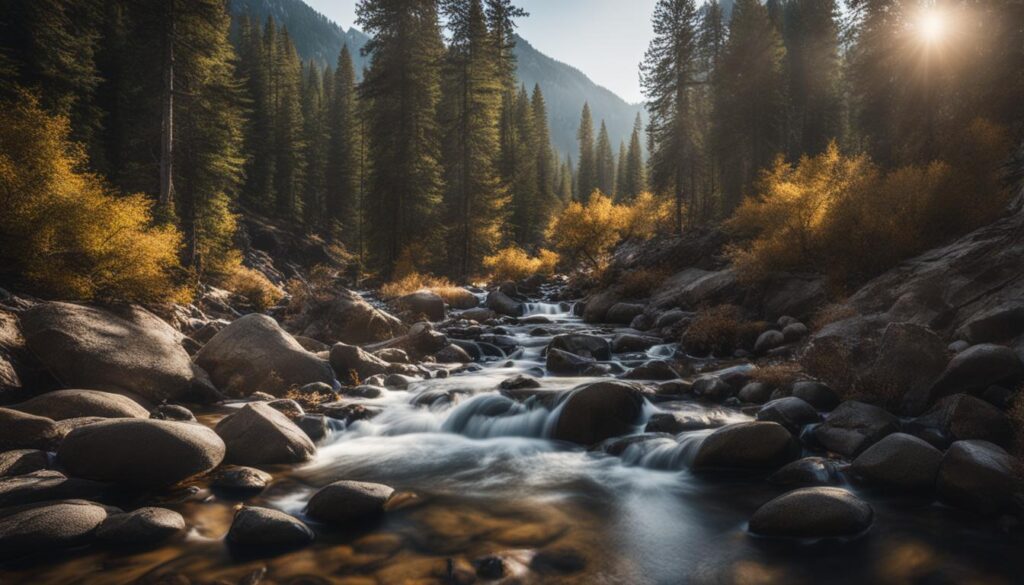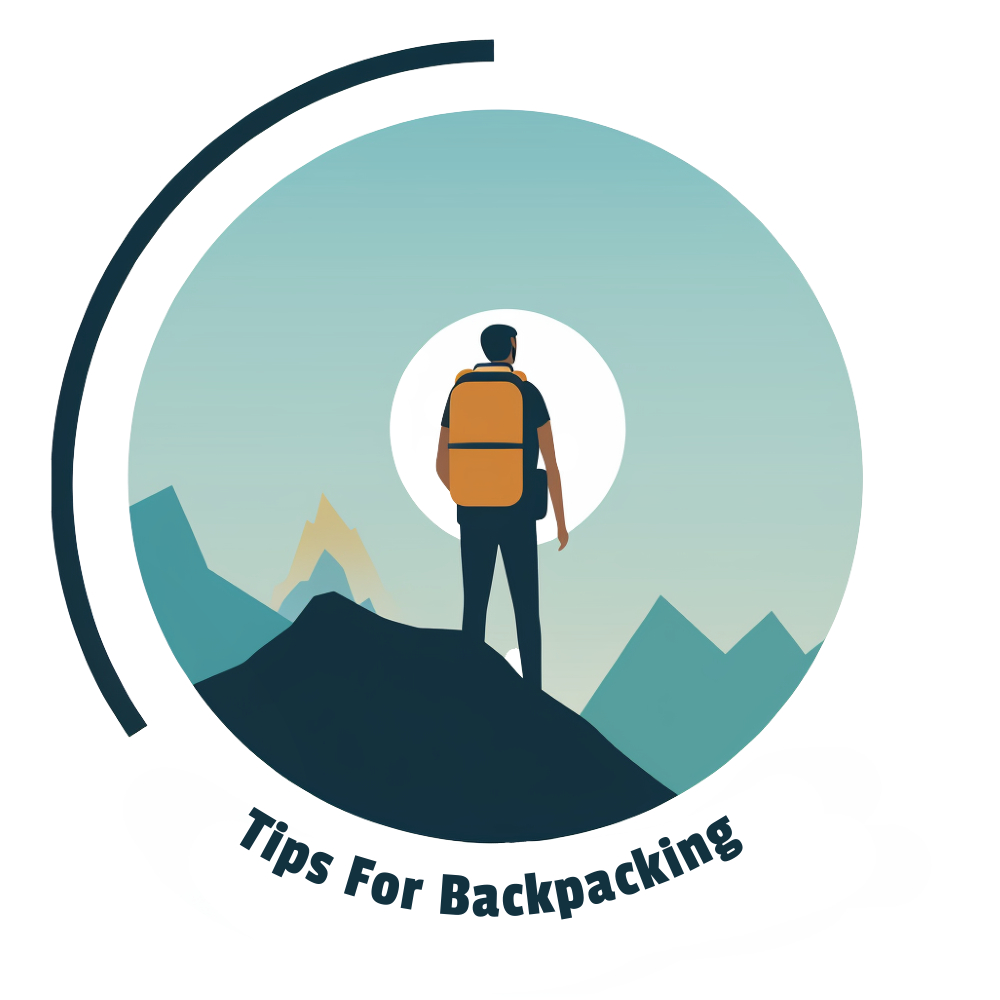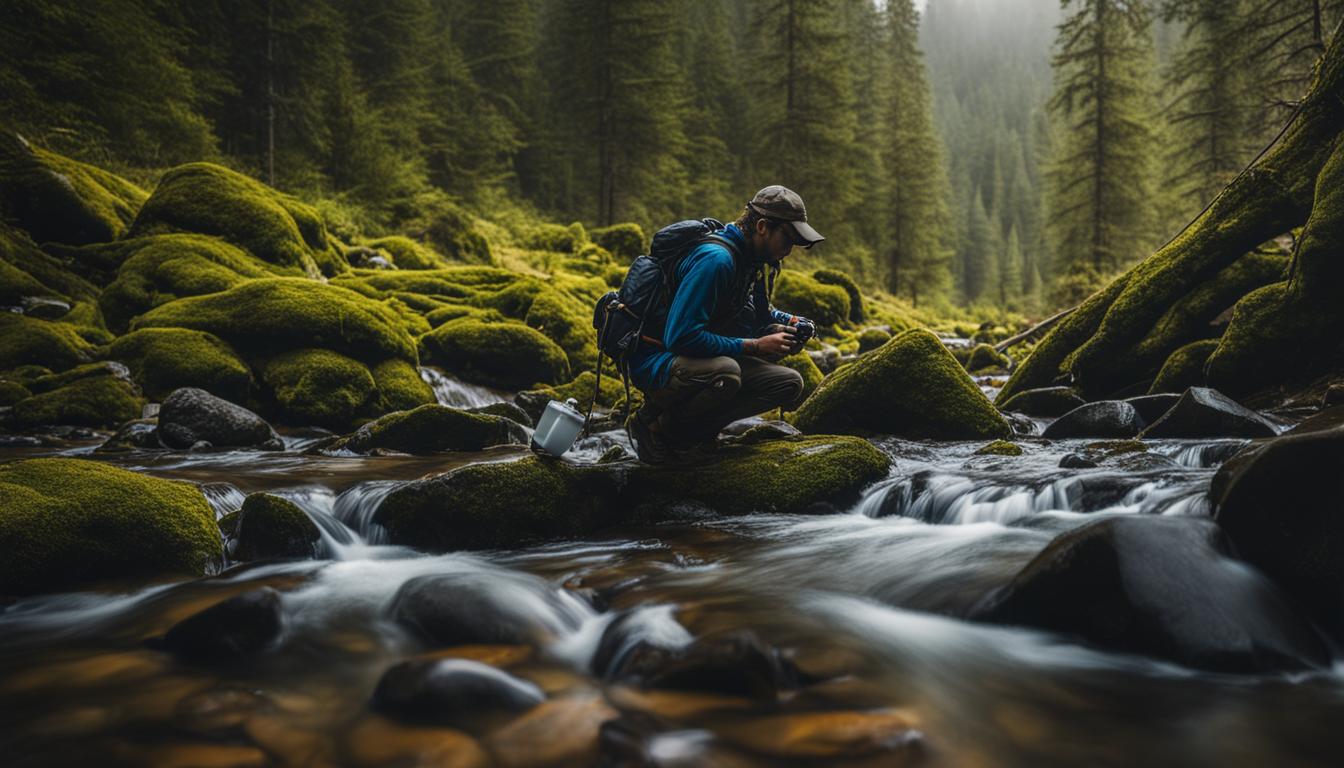When exploring the wilderness, it is crucial to have access to clean and safe drinking water. In a survival situation, finding water is a top priority, but it is important to note that water from natural sources is not immediately drinkable and may contain harmful microorganisms and bacteria. To ensure your safety and well-being, it is essential to have effective water filtration techniques in place.
Key Takeaways:
- Having access to clean and safe water is crucial when exploring the wilderness.
- Water from natural sources must be filtered and purified before consumption.
- Effective water filtration techniques include systems, boiling, tablets or drops, distillation, plants, stone boiling, and sedimentation.
- A water filtration system can be created using basic materials like sand and rocks, but should be combined with another purification method.
- Boiling water is one of the most effective methods for wilderness water purification, requiring a solid container and a heat source.
Remember, no matter which technique you choose, always prioritize your safety and well-being by filtering and purifying water in the wild.
Water Filtration System

One effective technique for water filtration in the wilderness is using a water filtration system. This method involves creating a makeshift filter using basic materials like sand and rocks. While this method may not completely purify the water, it helps to remove physical threats and hazards. To create a filter, you can use a cone-like container, such as a plastic water bottle, and layer it with filtration materials like sand, rocks, and moss. It is important to note that this method should be combined with an additional water purification method to ensure the water is safe to drink.
In a survival situation where access to clean drinking water is limited, a DIY water filtration system can be a lifesaver. By using readily available materials in the wilderness, you can create a simple yet effective filter. The layers of sand, rocks, and moss serve as a physical barrier, trapping larger particles and reducing the turbidity of the water. This can help remove impurities and make the water visually clearer.
However, it’s important to understand that a water filtration system alone may not eliminate all potential contaminants, such as viruses and certain chemicals. For comprehensive purification, it is advisable to combine the filtration system with other methods like boiling or using water purification tablets. By employing a multi-step approach, you can significantly improve the safety and quality of the water you consume in the wild.
DIY Water Filtration System: Step-by-Step Guide
- Find a cone-like container, such as a plastic water bottle.
- Cut off the bottom of the bottle to create an opening.
- Gather filtration materials, such as clean sand, small rocks, and moss.
- Layer the materials inside the bottle, starting with a thin layer of gravel or small rocks at the bottom, followed by a layer of sand, and finally a layer of moss on top.
- Secure the layers by placing a cloth or bandana at the mouth of the bottle.
- Pour the water through the top of the bottle, allowing it to pass through the filtration layers and collect at the bottom.
- Once the water has passed through the filter, it is advisable to further purify it using additional methods like boiling or using purification tablets.
| Advantages | Limitations |
|---|---|
| Easy to create with basic materials | Does not eliminate all contaminants |
| Reduces turbidity and removes visible impurities | Requires additional purification methods for comprehensive safety |
| Portable and lightweight | May not be suitable for filtering large volumes of water |
Boiling: An Effective Wilderness Water Purification Method
When it comes to ensuring safe drinking water in the wilderness, boiling is a tried and true method of purification. Boiling water is one of the most effective techniques for eliminating harmful bacteria and microorganisms, making it a reliable choice for survival situations. To sterilize water through boiling, you will need a solid container and a source of heat, such as a campfire or stove.
It is crucial to bring the water to a rolling boil and maintain it for at least five minutes to guarantee complete purification. During this process, the heat destroys most pathogens, rendering the water safe to consume. After boiling, it is advisable to allow the water to cool down before drinking or using it for cooking. Boiling is a straightforward, accessible, and cost-effective method for wilderness water purification.
While boiling is highly effective in removing harmful microorganisms, it does not eliminate other potential contaminants like chemicals, heavy metals, or sediment. If you suspect the water may contain such impurities, it is recommended to combine boiling with another purification method, such as filtration or chemical treatment, for comprehensive water safety.
Comparative Analysis:
| Purification Method | Effectiveness | Cost | Convenience |
|---|---|---|---|
| Boiling | High – kills most pathogens | Low – requires only a heat source and container | Medium – requires time and supervision |
| Chemical Treatment | High – effective against bacteria, viruses, and protozoa | Medium – cost of tablets or drops | High – portable and easy to use |
| Filtration | High – removes bacteria, protozoa, and sediment | High – cost of filtration system or replacement filters | Medium – requires equipment |
Overall, boiling water is a reliable and accessible wilderness water purification method. It is especially effective against bacteria and microorganisms, making it a suitable choice in most survival scenarios. By combining boiling with other purification techniques, you can ensure comprehensive water safety and peace of mind during your wilderness adventures.
Are there specific water filtration techniques that are more effective for backpacking compared to wilderness survival?
When it comes to outdoor adventures, backpacking water purification techniques offer portability and convenience. In contrast, wilderness survival may require more robust and reliable methods. For backpacking, compact filters and chemical treatments are popular choices, while survival situations may call for boiling water or using solar stills.
Tablets or Drops: Your Emergency Water Purification Solution
When you’re in the wilderness and need a quick and reliable way to purify water, look no further than water purification tablets or drops. These compact and portable products are a convenient addition to your emergency supplies, ensuring you have a safe source of drinking water.
Water purification tablets and drops work by releasing chemicals like iodine, chlorine, or potassium permanganate into the water. These chemicals effectively kill harmful organisms, making the water safe to drink. Simply follow the instructions provided with the tablets or drops, and let the water sit for the recommended amount of time to allow for proper purification.
It’s important to note that while tablets and drops are an effective method of emergency water purification, they’re best used in conjunction with other filtration or purification techniques. They should not be solely relied upon as the only means of water treatment. Additionally, it’s crucial to have a way to measure the amount of water being treated to ensure the correct dosage of tablets or drops.
In summary, water purification tablets and drops are a reliable and convenient solution for emergency water purification in the wilderness. By adding them to your emergency supplies, you can have peace of mind knowing that you have an effective method for ensuring the safety of your drinking water.

